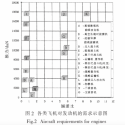There is a report of a fire at Chengdu Engine Company. Supposedly around where the WS-18 is built. Any corrobation or refutation?
It was a fireworks plant in the same vicinity as the engine company.
There is a report of a fire at Chengdu Engine Company. Supposedly around where the WS-18 is built. Any corrobation or refutation?
It was a fireworks plant in the same vicinity as the engine company.
A screen capture of archival footage of Taihang on a test fixture.

How is this post from two years ago relevant to news from these days?Nein!!! The mods limited his posts' visibility to himself only.
I skimmed through that thread before it got censored, I'll collate the bits of info I could remember.
- WS-10 has at least six variants
- WS-10 original
- WS-10B for J-10 series
- WS-10D for J-16 and Flanker series - closely related to WS-10B
- WS-10H with H standing for 海 or sea
- WS-10IPE - 14t thrust variant
- WS-10J with J standing for 舰载 or shipboard, AKA carrier aircraft engines
- Both the manufacturer and customer lost enthusiasm for the WS-10B so while it exists and is undergoing certification, there's no impetus to adopt it on J-10s
- Gongke101 believes it's because the number of J-10s equipped with AL-31s have already formed a critical mass and a switch to WS-10s would encounter significant systemic inertia
- WS-10H was the former name of the WS-10J but is now the name of the variant used on PLANAF J-11Bs
- WS-10J is the variant designed for J-15s; he mentioned something about the outlook of this variant but I forgot what he said
- When asked about the announcement about the WS-15 achieving design certification in 3 to 5 years, Gongke101 said it was very possible because he hasn't heard any bad news about the WS-15 lately
Apparently Pupu just said that the next batch of J-20s will feature thrust enhanced Taihangs (the 14.5 tonne variant?) and that a new 16 tonne WS-10 variant was being developed. As for the designations, Pupu said the WS-10B had roughly 14 tonnes of thrust, not sure about the others.How is this post from two years ago relevant to news from these days?
We know that one WS-10 engine is called WS-10C. WS-10C is IPE?
Block I refers to the 4th generation single engine fighter's thrust requirement (170 kN to 180 kN) while Block H refers to the 4th generation double engine fighter's requirement (150 kN to 160 kN). Basically, these are the PLA's "requirements" for the WS-15, at least in terms of thrust rating. Note these are old design specifications from 2004 and the requirements may have gone up quite a bit given the large progress of the Chinese gas turbine industry.Does anyone have the PLA requirement for WS-15? Then the dimensions and performance criteria maybe? also, the afterburner petals look shorter than what the CG videos about Taihang had shown.


This is a rather interesting post I just found, originating in 2017. The author says the the WS-15 has a thrust between 17 and 18 tons based on a flow rate (流量) of roughly 137 kg/s and an unit flow rate (单位流量) of between 1.25 to 1.3 kgf/kgs typical of 4th generation aeroengines. Apparently, he extrapolated the 137 kg/s figure from this table published by the 624th Institute back in 2011, which he believes is in reference to data collected during the WS-15 core's high altitude testing. My Chinese is not good so if I left out any of the details, please do point out. Also, does anyone know how he got to the 137 kg/s figure from the table, since his description does not specify the calculation method.
H represents altitude 0, M represents speed 0, Ga represents intake air flow, state (状态) represents 100% speed, and T1 represents afterburner temperature.
His accompanying description in Chinese for reference : 表格中只要看最下面一行就行了,H代表高度0,M代表速度0,Ga表示进气流量,状态代表100%的转速,T1代表加力温度。上面那篇论文的时间是2011年,作者是燃气涡轮院的,当时WS15正处于验证机研制的阶段,因此相应的数据也就是在处于研制阶段的WS15验证机在高空台上的试验点。验证机阶段国内是按照原型机96%的指标来研制,也就是说在验证机阶段只需要达到原型机96%的性能指标就行了,因此也就是说原型机的推力一般比验证机达到的推力大5%。按照表格上130Kg/S流量的数据,WS15原型机的流量约为137Kg/S流量的级别,按照四代机单位流量推力为1.25到1.3Kgf/KgS的水平,那么推算出WS15的推力范围为17吨到18吨附近,比产品30稍大,两者的推力差别大概为1到2吨,军推推力为11吨到12吨之间。
